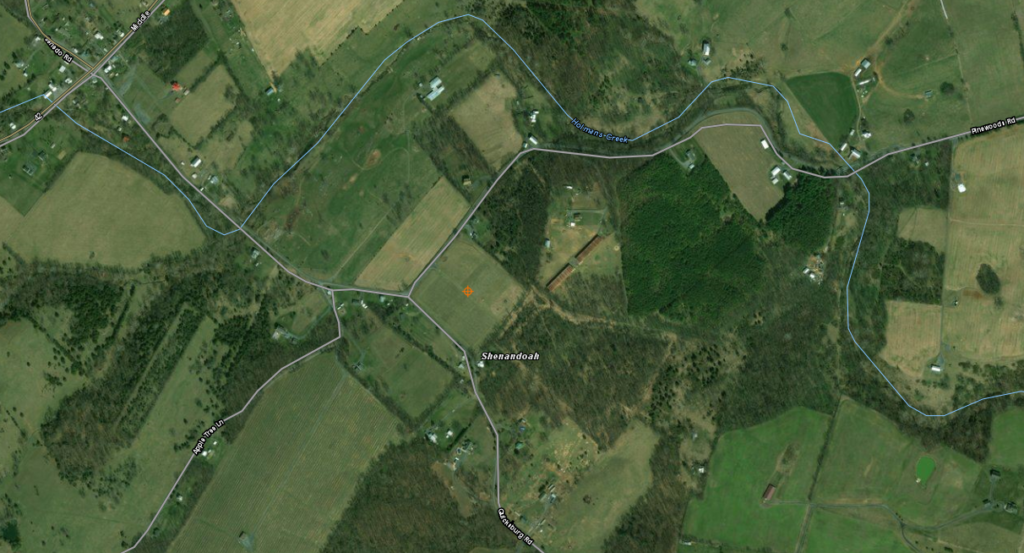Located in Quicksburg, Virginia, our vineyard is currently growing Petit Verdot, Chambourcin, Petite Pearl, Vidal Blanc, and Chardonel. When we decided to start our adventure in Virginia, we soon realized that the Shenandoah Valley AVA was best suited to our vision. Shenandoah County has one of the driest climates on the east coast and sits at the same latitude as California’s Sonoma and Napa Valleys. The property features a gentle slope facing west toward the Allegheny Mountains, an elevation of 1100 feet, and a limestone-based soil similar to that of the Loire Valley in France. All of these factors contributed to our decision to move here in 2012 and purchase the property on the corner of Pinewoods Road and Quicksburg Road. Under the guidance of vineyard consultant Jeanette Smith, we planted our first vines in 2013. Our grapes are currently being sourced to local wineries within Virginia.
Specifications
- Elevation 1,100 ft. above sea level
- Rows are positioned north to south
- Vineyard faces the Alleghany Mountains to the west
- Located in Shenandoah County, VA & Shenandoah Valley AVA
- Hillside vineyard sloping down toward Holman’s Creek
- Deer fence around entire vineyard
- Dry farmed
Weather
Shenandoah County in Virginia is one of the driest counties on the East Coast. Most precipitation is blocked or wrung out by the Alleghany and Blue Ridge mountain ranges before reaching the valley. Observations: Most weather systems move around the vineyard and winds tend to be westerly.
Terroir
Soil Composition: Frederick and Poplimento silt loams & clay, 2 to 15 percent slopes
Frederick: Parent material consists of dolomitic limestone with thin lenses of interbedded shale and sandstone. Natural drainage class is well drained and frequency of flooding or ponding is none.
Poplimento: Parent material formed from weathered limestone, shale and siltstone. Natural drainage class is well drained and frequency of flooding or ponding is none.
During the early Paleozoic era, much of the Shenandoah Valley region was flooded in a watery landscape that promoted sea life, helped shape the valley and contributed to the soils found within it.
Trellis Systems
Vertical Shoot Position (VSP), the vine shoots are trained upward in a vertical, narrow curtain with the fruiting zone below. A VSP trellis system can consist of four to six levels of wire. The cordon or fruiting wire is typically about 3 feet off the ground. Above the cordon wire are movable catch wires to train the growth of the shoots in an upward direction. These shoots may be trimmed at the top, giving the vineyard row a hedge-like form. The top wire is often about 60 to 70 inches high, but can also be adjusted.
High Bilateral Cordon System, involves training the cordons along the top wire of the trellis. The cordons remain as semi-permanent extensions of the trunk though they may need replacement every five or so years. Generally only two wires are needed for the trellis: the top cordon wire and a bottom training wire.


